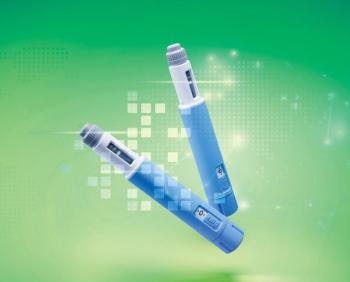
Psychiatric Issues in Emergency Care Settings
- Psychiatric Issues in Emergency Care Settings Vol 5 No 1
- Volume 5
- Issue 1
Can you give our staff some guidance on the appropriate use of critical incident stress debriefing and psychological first aid?
Psychological debriefing was developed as a way to intervene with large numbers of trauma survivors in circumstances in which individual evaluation and treatment are not possible, such as after mass trauma, terrorist attacks, or disasters. The most commonly used model of debriefing is Critical Incident Stress Debriefing (CISD), a structured protocol developed by Mitchell.1 CISD has been used quite frequently with rescuers, first responders, and law enforcement personnel. After the terrorist attacks in the United States on September 11, 2001, CISD was widely applied to groups of persons who were affected by the attacks.
Psychiatric nurse, Memphis
Psychological debriefing was developed as a way to intervene with large numbers of trauma survivors in circumstances in which individual evaluation and treatment are not possible, such as after mass trauma, terrorist attacks, or disasters. The most commonly used model of debriefing is Critical Incident Stress Debriefing (CISD), a structured protocol developed by Mitchell.1 CISD has been used quite frequently with rescuers, first responders, and law enforcement personnel. After the terrorist attacks in the United States on September 11, 2001, CISD was widely applied to groups of persons who were affected by the attacks.
CISD is conducted in a single session within a week or so of the trauma, typically in a group setting with 10 to 20 people. Participants are asked to describe in detail their experiences of the trauma, to formulate a cognitive appraisal and interpretation of the event, and to express their emotional reactions. Group sharing is encouraged, with the intention of normalizing stress reactions as well as providing social support. At the end of the session, time is set aside for education about possible future consequences of the trauma and common psychological responses to traumatic events.1
Unfortunately, despite anecdotal reports that CISD can be helpful, most research does not support this claim. In fact, debriefing has been found to have a potentially detrimental effect in some cases, with higher rates of post-traumatic stress disorder (PTSD) at long-term follow-up.2 Both non-CISD interventions and no intervention at all have been associated with better outcomes than CISD.
There are several possible reasons for these findings. CISD is administered in groups; thus, persons with different histories of trauma exposure, levels of distress, symptoms, and risk of PTSD do not receive individually tailored services. Some persons may be retraumatized or further distressed by hearing the event retold; others may feel stigmatized by having more dramatic psychological or emotional responses than their peers. In some settings--especially those in which members work closely together or depend on each other for safety (such as in law enforcement)--expressing one's feelings may lead to group rejection. Because CISD is administered equally to all exposed persons in a group, there are likely to be some who were not traumatized by the event and who may react negatively to treatment.
Psychological First Aid (PFA), in contrast, is not a specific therapeutic intervention; rather, it is a general framework for mental health professionals who are working with disaster-response organizations to provide individualized assistance to victims of natural disasters, terrorism, and other mass traumas. PFA was developed by the Terrorism Disaster Branch of the National Child Traumatic Stress Network and the National Center for PTSD (NCP). The PFA Field Operations Guide--a working document published in response to the need for written materials for those providing assistance after Hurricane Katrina--can be downloaded from the NCP Web site.3
PFA can be delivered in the field in diverse settings, such as shelters, hospitals, and mobile response units. Although modular, it is intended to be flexible, and the different components can be tailored to fit the specific needs of the persons involved. It can be used in children, adolescents, and adults. The model is evidence-based and culturally informed. The main goals of the interventions are to decrease the initial distress associated with exposure to trauma and to improve longer-term adaptive functioning.
PFA emphasizes a nonintrusive, compassionate attitude on the part of clinicians; the model discourages trauma debriefing in any form. Clinicians are encouraged to allow traumatized persons to talk about their experiences as little or as much as they wish to, but never to push for information or ask for retellings of events. Instead, the core components of PFA focus on practical assistance with immediate needs, providing safety and comfort, and establishing connections with primary support networks and social resources. PFA also encourages nonstigmatizing education about common reactions to trauma and provides handouts for traumatized persons on such topics as helping preschoolers, relaxation exercises, and post-trauma drug and alcohol use.
Catherine Scott, MD Assistant Professor of Clinical Psychiatry Keck School of Medicine, University of Southern California Medical Director, Psychological Trauma Program Attending Psychiatrist, Psychiatric Emergency Services LAC+USC Medical Center Los Angeles
John Briere, PhD Associate Professor of Psychiatry and Psychology Keck School of Medicine, University of Southern California Director, Psychological Trauma Program LAC+USC Medical Center Los Angeles
References:
REFERENCES
1. Mitchell JT. When disaster strikes . . . the critical incident stress debriefing process.
JEMS.
1983;8:36-39.2. Mayou RA, Ehlers A, Hobbs M. Psychological debriefing for road traffic accident victims. Three-year follow-up of a randomised controlled trial.
Br J Psychiatry.
2000;176:589-593.3. National Center for PTSD Web site. Available at: http://www.ncptsd.va.gov/ pfa/PFA.html. Accessed October 27, 2005.
Articles in this issue
almost 20 years ago
Back Issues Availablealmost 20 years ago
Psychiatric Price of Steroid Abusealmost 20 years ago
ADD THE BLACK BOX TO MORE LABELS?almost 20 years ago
PSYCHIATRIC SYMPTOMS SIGNAL AUTOIMMUNE DISORDERSalmost 20 years ago
DECADE OF DISCOVERY IN PEDIATRIC BDalmost 20 years ago
Evaluating for Alcohol and Substance Abusealmost 20 years ago
Dual Diagnosis: A Challenge for ED Cliniciansalmost 20 years ago
Substance Use Disorders in the Emergency SettingNewsletter
Receive trusted psychiatric news, expert analysis, and clinical insights — subscribe today to support your practice and your patients.

















